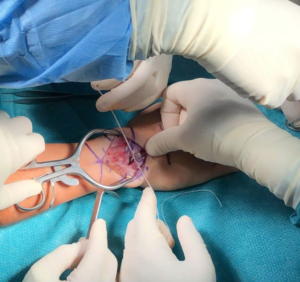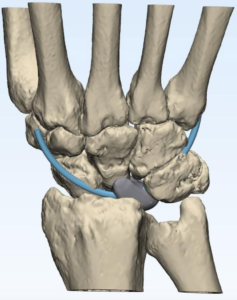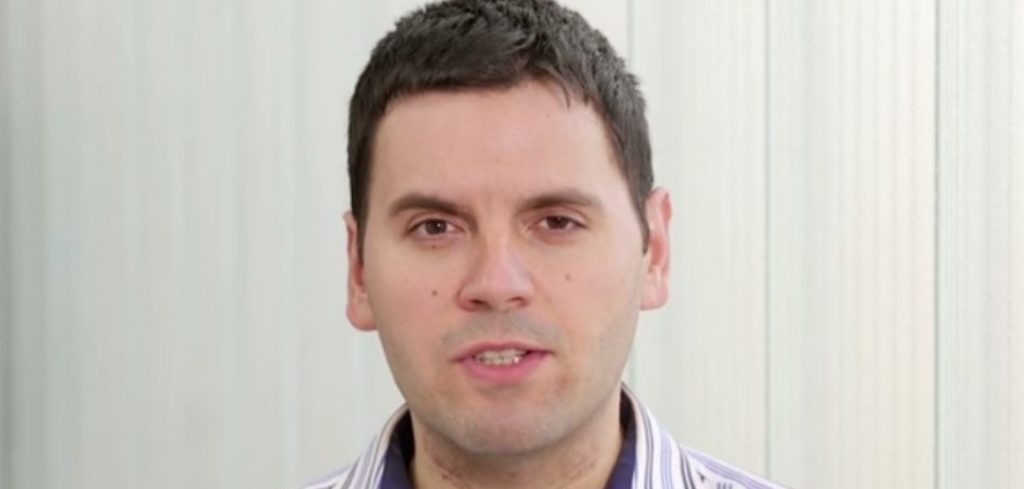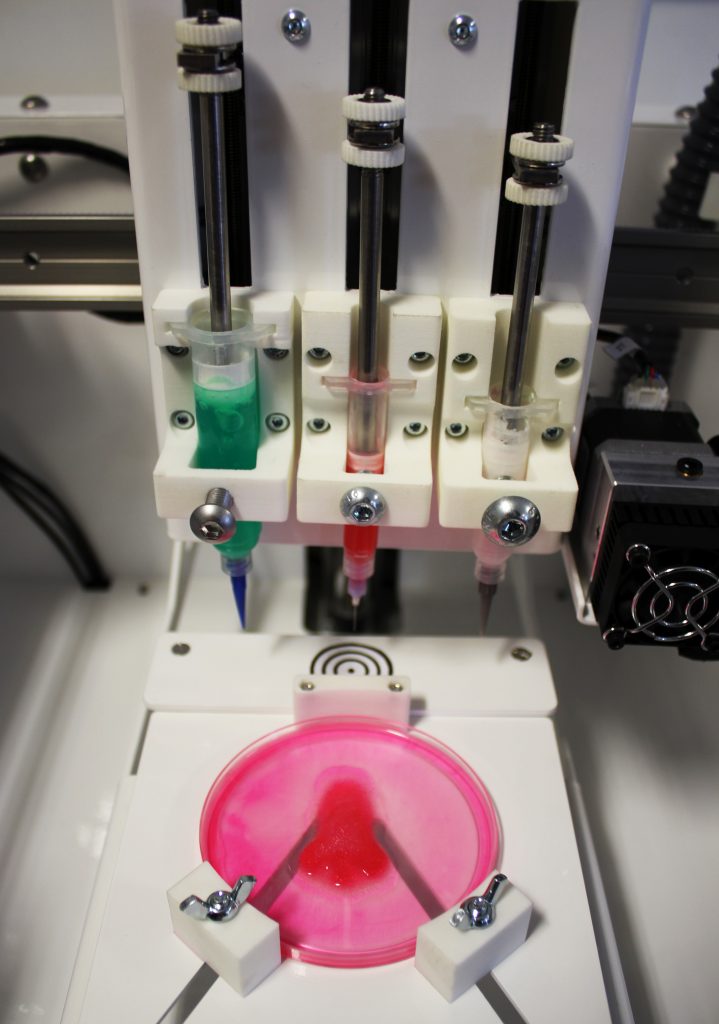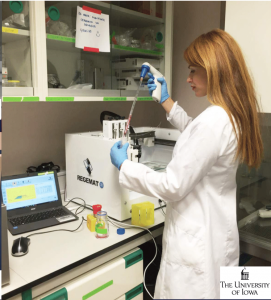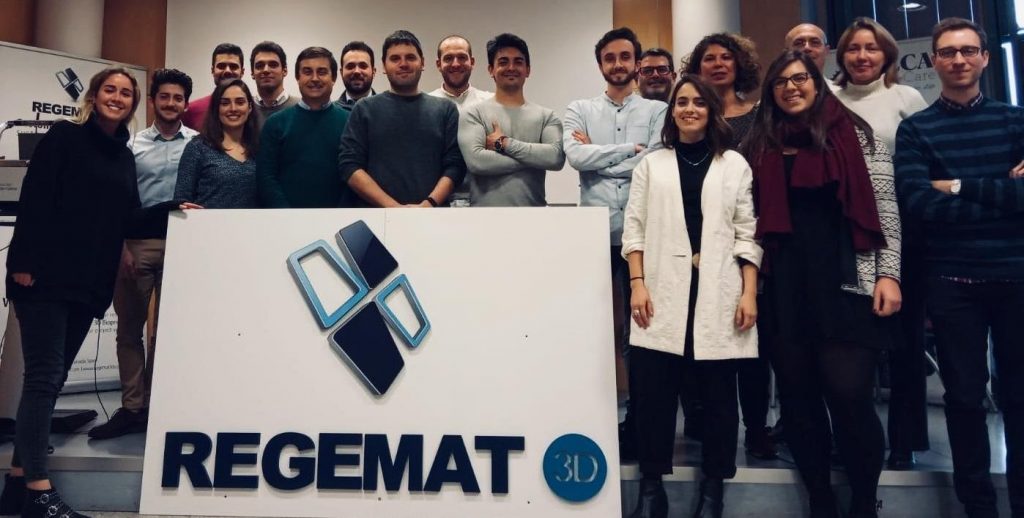 With sights set on helping medicine solve complex pathologies, the Spanish-based healthcare company BRECA has become a pioneer in Europe, specializing in the design, manufacture, and marketing of customized implants. The company believes 3D printing for personalized medical devices has major benefits for patients and surgeons, such as less blood loss during the operation, a considerable reduction in surgery time and recovery, shorter time under anesthesia, and basically the possibility of generating a custom implant for better adaptation with more aesthetic results. After a series of successes with maxillofacial and neurosurgical 3D printed medical implants, BRECA began to seriously consider offering their services to surgeons in the field of orthopedics. The company’s first customized solution, a complete wrist bone prosthesis, was 3D printed using titanium in June for implantation on a patient who had no mobility of his right wrist and was in a lot of pain. BRECA worked alongside a team of surgeons at the NeuroTraumatology Hospital and Rehabilitation, which is part of the Hospital Universitario Virgen de las Nieves in Granada, who were able to successfully carry out the procedure and after months of recovery, they have presented their case to the world.
With sights set on helping medicine solve complex pathologies, the Spanish-based healthcare company BRECA has become a pioneer in Europe, specializing in the design, manufacture, and marketing of customized implants. The company believes 3D printing for personalized medical devices has major benefits for patients and surgeons, such as less blood loss during the operation, a considerable reduction in surgery time and recovery, shorter time under anesthesia, and basically the possibility of generating a custom implant for better adaptation with more aesthetic results. After a series of successes with maxillofacial and neurosurgical 3D printed medical implants, BRECA began to seriously consider offering their services to surgeons in the field of orthopedics. The company’s first customized solution, a complete wrist bone prosthesis, was 3D printed using titanium in June for implantation on a patient who had no mobility of his right wrist and was in a lot of pain. BRECA worked alongside a team of surgeons at the NeuroTraumatology Hospital and Rehabilitation, which is part of the Hospital Universitario Virgen de las Nieves in Granada, who were able to successfully carry out the procedure and after months of recovery, they have presented their case to the world.
Sergio Lopez, a 28-year-old patient, had been diagnosed with osteonecrosis in his wrist bones, also known as Kienbock’s disease. The rare and debilitating condition is known to lead to chronic pain and dysfunction. This happens when one of the eight small carpal bones in the wrist, the lunate bone, becomes damaged because there is no blood supply. Kienböck’s most commonly affects people aged from 20 to 40 years of age, and it occurs in men more often than in women; untreated, the disease will see the progressive deterioration of the wrist and even loss of function. Scientists and engineers at BRECA are constantly searching for solutions to rare and painful diseases, so this new venture into orthopedics is part of what the company is all about. This relatively new procedure replaces the bone with a prosthetic replica made of a durable material that can preserve the anatomy of the wrist bones. The team of surgeons said that most studies suggested using limited commercial prostheses (which don’t offer much mobility of the wrist) and only found one similar case in China where surgeons used a 3D printed prosthesis to successfully treat the wrist.
“Currently available surgeries lead to a total loss of mobility of the patient’s wrist joint, so we decided to look for alternatives and realized that recreating the wrist bone of the patient using 3D technology was a good choice to help overcome advanced Kienbock’s disease,” said David Peris, one of the orthopedic surgeons from the Hospital de la Virgen de las Nieves who participated in the procedure.
The reconstruction process began with an MRI and a CT scan of the patient’s anatomy that needed to undergo surgery; then, BRECA specialists designed the prosthesis using the patient’s healthy semilunar wrist bone on his left hand as the basis. Using CAD software and 3D printed anatomical models for practice, the experts were able to decide where to make the holes in the prosthesis to anchor it to adjacent bones during the operation, using resistant threads to give it the right stability. This was followed by the development of surgical instruments along with the final prosthesis using the company’s custom 3D printing technology. Finally, surgeons Ricardo Cardona Santana, David Peris Puchol, Enrique Miguel López Herrada and Manolo Delgado Alaminos, carried out the resection and implantation surgery. And once Lopez had fully recovered, he underwent months of rehabilitation that helped him regain mobility of his hand.
According to Peris, “the benefits of using 3D printing technologies for the manufacture of prostheses and implants are very promising, as customized anatomical replacements of diseased bones offer great maneuverability and help surgeons tackle problems that have no other solutions today. But we still have to consider that there could be a few drawbacks, such as implant rejection or even prosthetic loosening due to particle disease.”
During recovery, surgeons were very pleased with López’s evolution. He went from taking three anti-inflammatories a day to none at all. According to the surgeons, this implies less risk of side effects from the drugs, as well as a reduction in pharmaceutical spending, overall improve the quality of life of the patient. With regard to mobility, surgeons claim that he has already exceeded the range of mobility and use of force that was measured prior to surgery, and even though they still don’t know how far he will recover, if a traditional procedure had been performed (called wrist arthrodesis), he would have no mobility at all.
“The difficulty of the operation is also given by the nature of the bone to be implanted: the semilunar bone is a crescent-shaped wrist bone, with six faces and four of them are articulated. Thanks to 3D modeling and printing technology, we can generate complex implants like this and prepare for the surgery using anatomical models reconstructed from CT scans, that also help the patient understand what will happen during surgery,” indicated Peris.
Over the last few years, BRECA has been involved with surgeons in many hospitals throughout the country, developing implants that would have otherwise been impossible to create. Earlier this year, another knee reconstruction operation at the same hospital, had BRECA participating with a prosthesis development for a 22-year-old patient who suffered massive dissecting osteochondritis and needed treatment of the damaged joint. BRECA experts claim they understand that surgeons have to deal with very complex cases, which is why they hope their know-how and technology can help them with the manufacture of specific implants and prostheses as well as planning for surgeries, manufacturing instruments to prepare biological grafts and even helping predict osteotomies.
Working alongside surgeons BRECA’s first customized solutions for the field of orthopedics seems to be turning out better than expected. Now, the company expects to keep working on their personalized, patient-specific treatments to improve patient healthcare as well as reduce time and costs during surgical procedures.
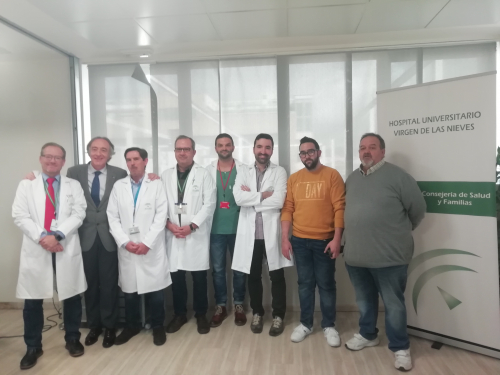
Sergio Lopez with his surgeons: Ricardo Cardona Santana, David Peris Puchol, Enrique Miguel López Herrada and Manolo Delgado Alaminos
[Image credit: BRECA, Hospital Universitario Virgen de las Nieves and EFE]
The post Pioneering 3D Printed Wrist Prosthesis for Kienbock’s Disease appeared first on 3DPrint.com | The Voice of 3D Printing / Additive Manufacturing.

